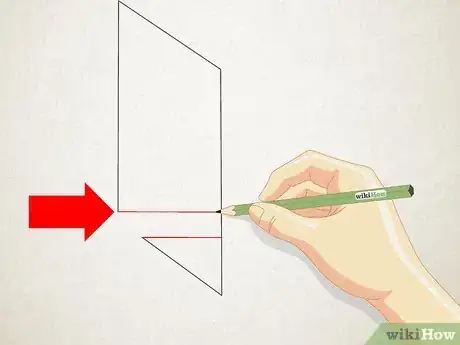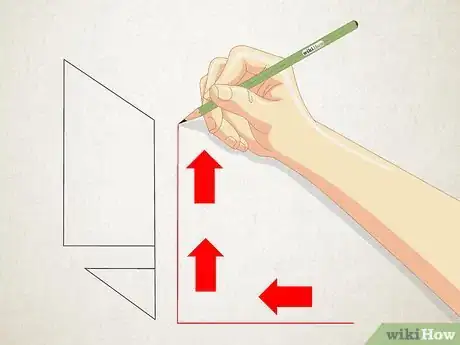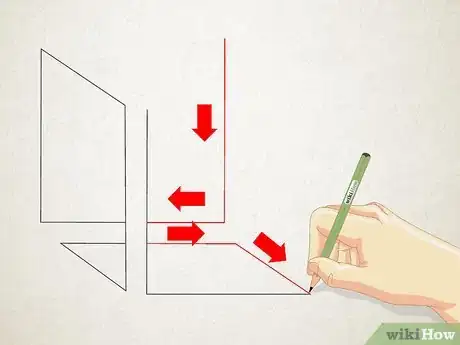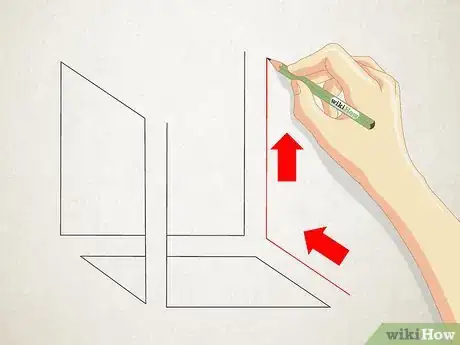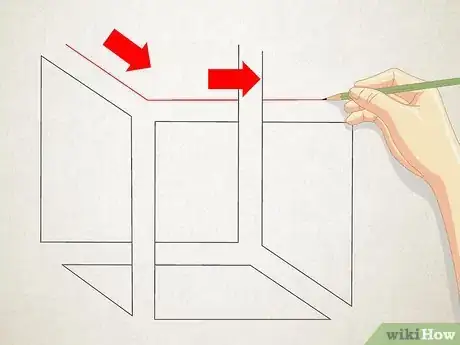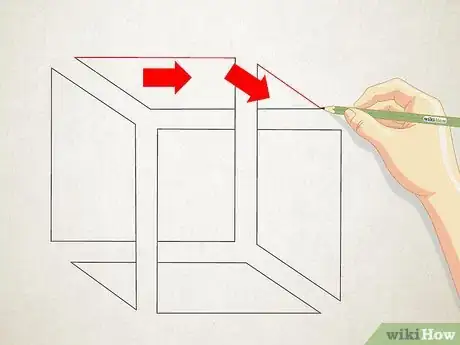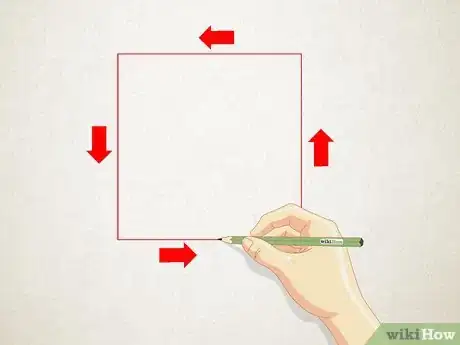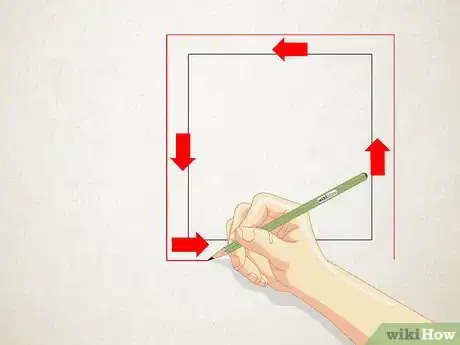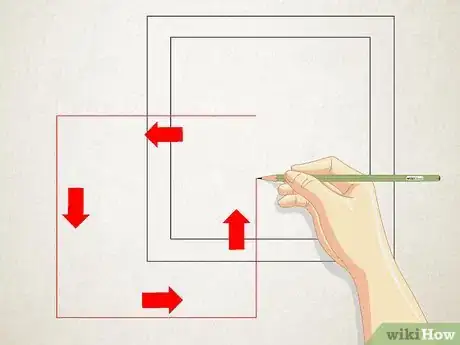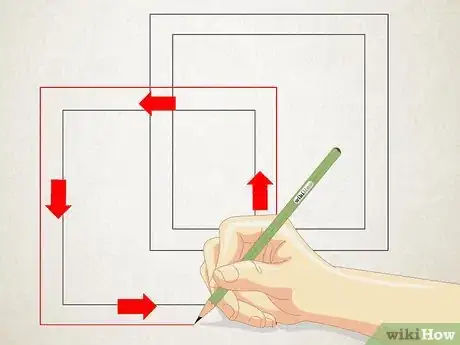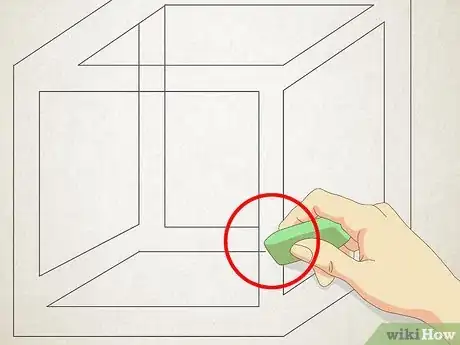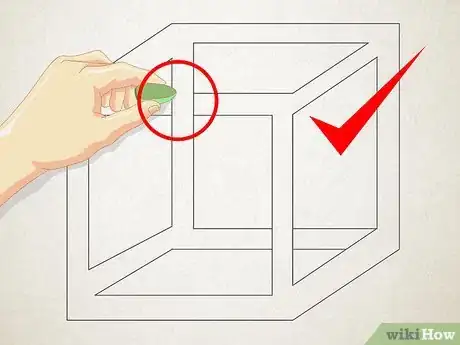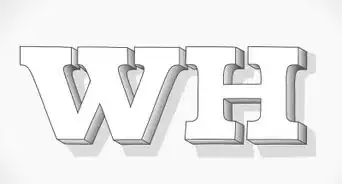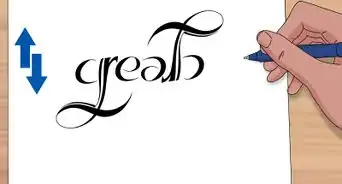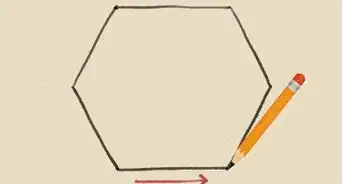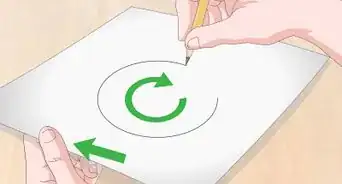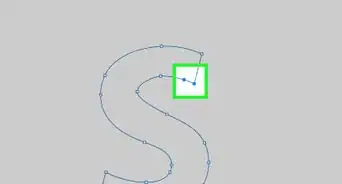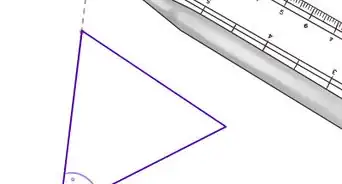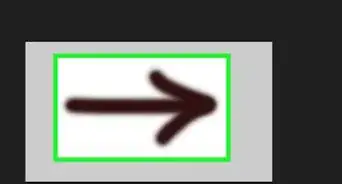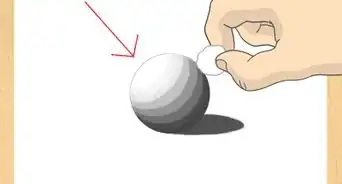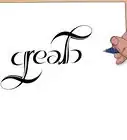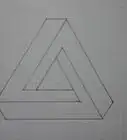wikiHow is a “wiki,” similar to Wikipedia, which means that many of our articles are co-written by multiple authors. To create this article, 54 people, some anonymous, worked to edit and improve it over time.
This article has been viewed 388,758 times.
Learn more...
An impossible cube (sometimes called an irrational cube) is an illustration of a cube that could never exist in real life. One is present in M.C. Escher's lithograph, Belvedere, but fortunately, you don't have to be an accomplished artist to draw one. This article will teach you how to make a similar cube.
Steps
Parallelogram to impossible cube
-
1Draw a skinny, vertical parallelogram with the lower left corner open; from there, draw two lines going horizontally, shown in red.
-
2Add two connecting lines on the right side of the parallelogram. They should form an "L".Advertisement
-
3Add another two lines which continue from the corner of the parallelogram but pass beneath its right edge. The two lines then separate vertically, one going up and another going down to meet with the end of the "L".
-
4Draw a wide "L" that follows where the two previously drawn lines part ways.
-
5Connect the bottom end of the wide "L" with the upper right-hand corner of the parallelogram by drawing a line that goes up and then left (forming a right angle) and passes underneath any lines it comes across.
-
6Draw a line that begins by following the top of the parallelogram and then follows the horizontal part of the line drawn in the previous step, also passing underneath any lines it comes across.
-
7Complete a parallelogram at the top of the cube, this one with its upper right-hand corner open and connected to double lines drawn earlier.
-
8Add a border around the whole thing.
Erasing square to impossible cube
-
1Draw a square.
-
2Create a slightly larger square around the first.
-
3Draw another square, lower left corner in the center of the first square.
-
4Create a square around the new square as well.
-
5Erase each corner of both squares. Connect each corner with the same corner on the other square.
-
6At the parts where the left of square 2 and the top of square 1 overlap each other, erase a bit to make the line horizontal, erase the vertical parts.
-
7At the parts where the right of square 1 and the bottom of square 3 overlap, erase the horizontal parts and keep the vertical parts.
Community Q&A
-
QuestionWho made the impossible cube?
 Pastamonster35Community AnswerThe impossible cube was invented by M.C. Escher for his print Belvedere.
Pastamonster35Community AnswerThe impossible cube was invented by M.C. Escher for his print Belvedere. -
QuestionWhat if my lines aren'tt straight? Will it affect the cube I am trying to draw?
 Community AnswerYes, it will. When you are drawing 3-D objects, it is ideal to use a ruler.
Community AnswerYes, it will. When you are drawing 3-D objects, it is ideal to use a ruler. -
QuestionCould you clarify how to do step 5?
 CloudcrunchCommunity AnswerStep 5 indicates that you should draw two straight lines (forming an L shape) from the bottom right point to the middle of the tallest side. The lines should not cross over any other lines they meet, but go under them.
CloudcrunchCommunity AnswerStep 5 indicates that you should draw two straight lines (forming an L shape) from the bottom right point to the middle of the tallest side. The lines should not cross over any other lines they meet, but go under them.
Things You'll Need
- Pencil
- Paper
- Time and practice
- (Optional, ruler for exact measurements)
- Eraser for mistakes
About This Article
The simplest way to draw an impossible cube is to use a pencil to draw a square. Around this square, draw a slightly bigger square so that it borders the first one. Then, to the bottom left of your first square, repeat this process so that your new set of squares overlaps with the first. Erase the corners of your squares and connect the lines to form a cube. To create the impossible cube effect, erase the horizontal connection where Square 2 connects to Square 1 on the left corner, and make the connection vertical. To learn how to draw an impossible cube by starting with a parallelogram, scroll down!
